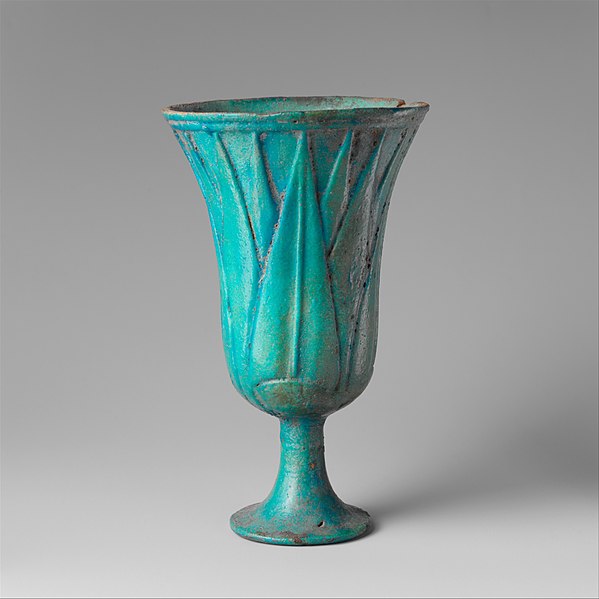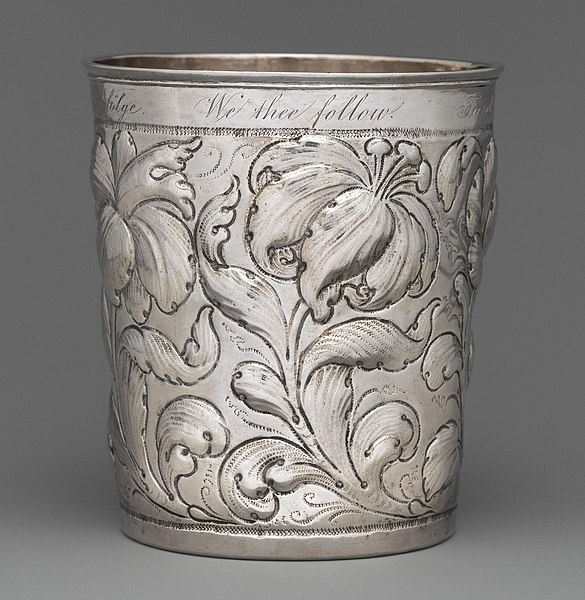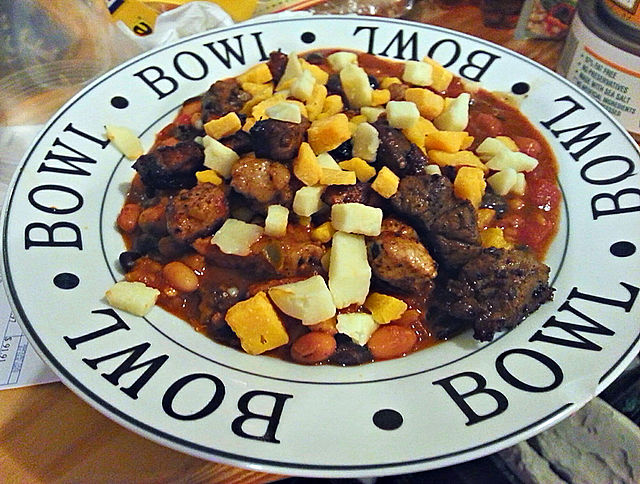A cup is an open-top container used to hold liquids for pouring or drinking. Although mainly used for drinking, it also can be used to store solids for pouring. Cups may be made of glass, metal, china, pottery, wood, stone, bone, polystyrene, plastic, aluminium or other materials, and are usually fixed with stem, handles, or other adornments, though a beaker has no handle or stem. Cups are used for quenching thirst across a wide range of cultures and social classes, and different styles of cups may be used for different liquids or in different situations. Cups of different styles may be used for different types of liquids or other foodstuffs, in different situations, or for decoration.
Rococo cup with saucer, circa 1753, soft-paste porcelain with glaze and enamel, Los Angeles County Museum of Art
Ancient Egyptian lotiform cup; 1295-1185 BC; faience; height: 15 cm, diameter: 9.1 cm; Metropolitan Museum of Art
Silver beaker, possibly Norwegian, second half of the 17th century, silver, overall: 9.2 × 8.3 cm, Metropolitan Museum of Art
Chinese cup and saucer; 1745; porcelain; diameter: 10.2 cm; Cleveland Museum of Art
A bowl is a typically round dish or container generally used for preparing, serving, storing, or consuming food. The interior of a bowl is characteristically shaped like a spherical cap, with the edges and the bottom forming a seamless curve. This makes bowls especially suited for holding liquids and loose food, as the contents of the bowl are naturally concentrated in its center by the force of gravity. The exterior of a bowl is most often round, but can be of any shape, including rectangular.
Self-identified bowl performing one of the most common functions of bowls: the serving of food (in this case, chili)
Romanian large bowl from the Middle Bronze Age; c. 1550 BC; burnished earthenware; overall: 15.5 × 31.3 cm; Cleveland Museum of Art (U.S.)
Lakh - millet flour porridge in communal platter served topped with sweetened fermented milk (sow). Senegal, West Africa.
Large copper bowl. Dhankar Gompa








